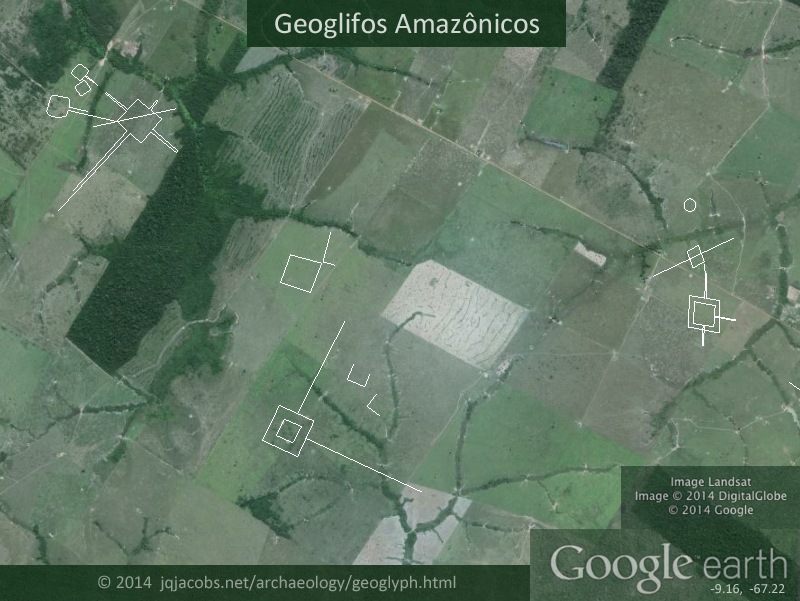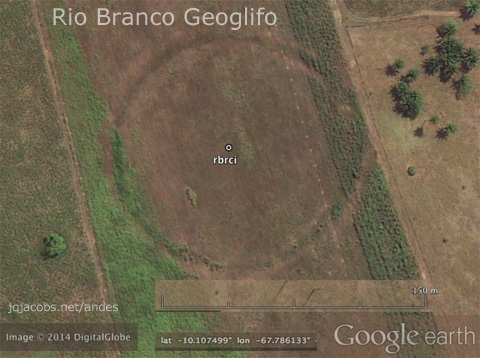Anthropology
Related: About this forumStudy sheds light on pre-Columbian life in understudied area of SW Amazon
JUNE 7, 2021
by University of Central Florida

1 / 1As part of this study, the researchers commissioned an illustration by artist Kathryn Killackey. The illustration is a representation of the pre-Columbian landscape around 3,500 years ago, based on their reconstruction, and details what they believe the region would have looked like at the time. Credit: Kathryn Killackey
A new study co-authored by University of Central Florida researchers shows that pre-Columbian people of a culturally diverse but not well-documented area of the Amazon in South America significantly altered their landscape thousands of years earlier than previously thought.
The findings, published in the journal Proceedings of the National Academy of Sciences, show evidence of people using fire and improving their landscape for farming and fishing more than 3,500 years ago. This counters the often-held notion of a pristine Amazon during pre-Columbian times before the arrival of Europeans in the late 1400s.
The study, which was conducted with experts from the UK's Northumbria University, also provides mores clues to the past of the diverse, but not well-documented, cultures that live in the area known as the Llanos de Mojos in northeastern Bolivia.
"This region has one the highest diversity of languages in the world, which reflects distinct ways of life and cultural heritage," says study co-author John Walker, an associate professor in UCF's Department of Anthropology. "We know something about the last 3,000 to 4,000 years of, say Europe or the Mediterranean, but we don't have some of that same information for the people here. That makes this an incredible story waiting to be written."
More:
https://phys.org/news/2021-06-pre-columbian-life-understudied-area-sw.html
~ ~ ~
I stumbled into something far larger than I was expecting to see, looking for a map of the part of the Amazon discussed above, the SW part of the Amazon which is in North Eastern Bolivia, in this area:
Llanos de Mojos in northeastern Bolivia map
At this point in the day, with no sleep overnight, yet, I can't really grasp what I'm seeing, but it's so interesting!
Hundreds of Geoglyphs Discovered in the Amazon
Introduction - Introdução
2019.01.31 - Currently, more than 500 geoglyphs are documented in both an Excel spreadsheet and Google Earth placemark files. The geoglyphs are placemarked, all except the smallest earthworks are outlined, plus visible ancient lines are highlighted. This page was created over several years, with additions blogged chronologically down page. First, links to the most recent data files:
Amazon Geoglyphs Excel Database - amazon_geoglyphs.xls
Amazon Geoglyphs Google Earth Placemarks - amazon_geoglyphs.kml
Space Archaeology in the Amazon, Beni, Bolivia Placemarks - bolivia.kml

Hundreds of Geoglifos Discovered in the Amazon
2010.01.20 - Geoglifos is the term applied in Brazil to geometric earthworks discovered after recent deforestation. Geoglyphs are not new in South American archaeology, but these are different—massive earthworks of tropical forest soil rather than desert surface alterations. The Amazon Geoglifos present geometric forms; circles, squares, ellipses, octagons, and more, with individual forms up to several hundred meters across. Some are connected by parallel walls. Their distribution spans hundreds of kilometers, and much of the area remains forested jungle. Some resemble geometric earthworks in the Ohio Valley.

Click images to view larger aerial imagery.
Geoglifos have been discovered in Google Earth by exploring areas with recent high-resolution imagery updates. (Click thumbnail images herein to view larger image files in a new window.) Recent Brazilian news videos on the ground and from small planes, embedded below, clearly illustrate the impressive scale, the massive amount of earth moved, and the unique monumental quality of this ancient cultural expression.
Earthworks preservationists, researchers, and recent archaeology news feeds called my attention to these constructs enough times to finally prompt online research. I was surprised by their numbers and scale. I quickly noticed many newly-discovered earthworks are already damaged. There seems to be no respect of or protection for the unique archaeological remains. Have efforts been made to preserve them? Do the forms go unnoticed on the ground in the jungle because of their large scale? The ancient human landscape has come to the attention of UNESCO, good news for conservationists while jungle deforestation marches apace. Apparently, archaeology survey needs to precede road building and vegetation clearing in this region, not follow on the deforestation.
Perhaps greater recognition of the signficance and scope of the Amazon Geoglifos discovery will protect them. With that goal in mind, here follows a collection of the current YouTube videos, placemark links, more images from Google Earth, readings, and online resource links:
http://www.jqjacobs.net/archaeology/geoglyph.html